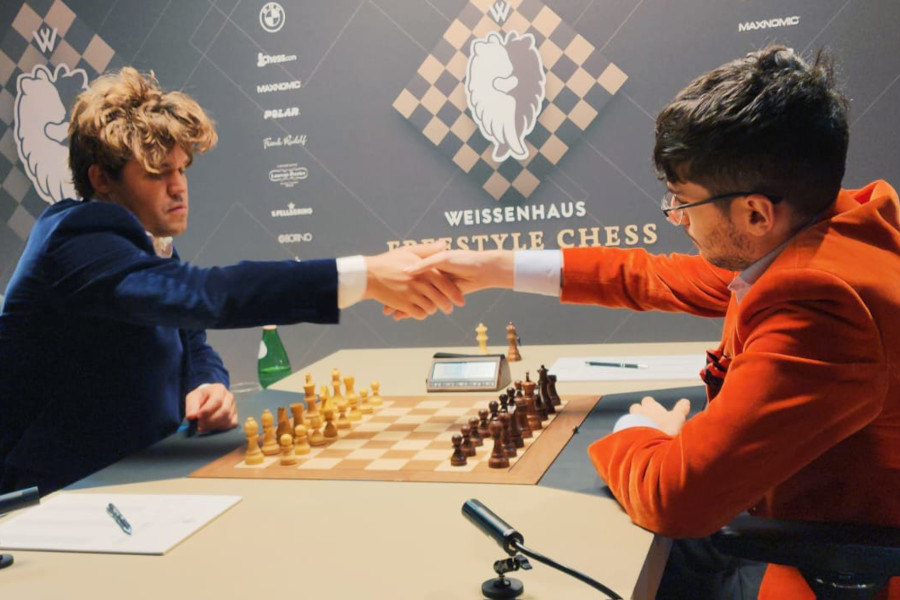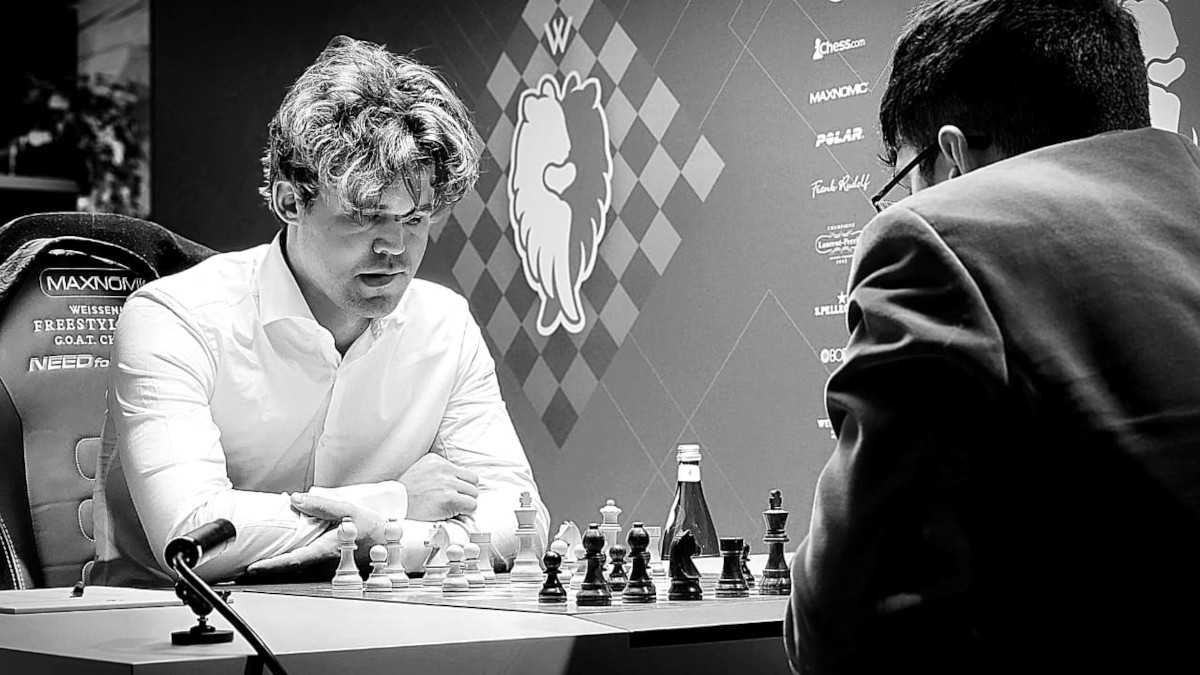


Three games ended decisively on the first day of the quarter-finals at the Freestyle G.O.A.T. Challenge in Germany. Nodirbek Abdusattorov and Fabiano Caruana, who both won on Sunday, had little trouble getting the half point they needed to advance to the semi-finals, as they drew Ding Liren and Gukesh D, respectively. Alireza Firouzja, on the other hand, saw Magnus Carlsen bouncing back in their second classical encounter. Carlsen then scored consecutive wins in the rapid tiebreakers to leave his young opponent out of the semis.
The one match that saw game 1 ending in a draw was the one facing Levon Aronian against Vincent Keymer. In the rematch, Aronian had the white pieces and got a positional advantage right out of the opening.
With the queen on the b-file in the starting position, all players — except for Keymer — pushed their pawns either to c3 or c6 to clear a path for the strongest piece on the board.
3...Nd6 proved to be a strategic error in this setup, at least in practice. Not only does it block the e-pawn (...e7-e5 was played on all three remaining boards) but it also makes it much more difficult for the queen to be developed.
Aronian’s handling of the position, from a human point of view, was remarkable, as he sacrificed a pawn to get a strong initiative against the under-developed black army. The game lasted 20 moves, with the Armenian-born GM finding a nice final move to prompt his opponent’s resignation.
20.Rxd6+ ends the game at once, as 20...cxd6 fails to 21.Bb6+ Kc8 22.Rc4+ Qc7 23.Qxc7#. Note that the black queen was unable to move throughout the whole game.
Less than a week ago, Carlsen defeated Firouzja in the Grand Final of the Chessable Masters, in what was a hard-fought contest, featuring a resilient Firouzja who bounced back from a loss in the first mini-match.
Now, at the Freestyle Challenge in Germany, a rematch was set up in the quarter-finals. Unlike in the online event, it was Firouzja who struck first, as he defeated his famed opponent in the first encounter of the match.
Carlsen had the white pieces in the second classical game of the quarter-final, and saw Firouzja playing a bit too cautiously, as a draw was enough for him to reach the semis.
Under different circumstances, it is likely that Firouzja would have played the strong 11...a5 here, when 12.Qxb7 Rb8 13.Qa6 Rxb2 leads to a double-edged position with both kings rather vulnerable on the d-file.
Instead, Firouzja’s safety-first approach prompted him to go for 11...b6, and after 12.d4 it is difficult to find a good square for the queen. Firouzja continued with 12...Qa5, allowing 13.Qxa5 bxa5, when the queens have left the board, but at the cost of White permanently damaging the black pawn structure.
A focused Carlsen began to work his magic here, and converted his positional advantage into a 41-move win, taking the match to rapid (and blitz, if necessary) tiebreakers.
Out of the four games that Carlsen and Firouzja would end up playing in their match, perhaps the third one was the most significant. A sharp struggle from the get go resulted in a highly imbalanced position, both structurally and materially — by move 24, Carlsen, playing black, was an exchange down, a pawn up, and had a strong pair of bishops.
Engines evaluate this position as equal, but at this point Firouzja had a bit over a minute on his clock, while Carlsen had about four minutes remaining (with 10-second increments).
What followed was a demonstration of the contenders’ incredible calculation abilities, as no major mistakes were made until reaching the technical phase of the game. Carlsen, nonetheless, was the one emerging with a slight advantage.
Black is indeed a pawn to the good, but converting this position into a win is no easy task. Besides the fact that Carlsen had little time to think, Firouzja counted with a strong defensive resource — i.e. simplifying into a position in which Black’s dark-squared bishop and (potential) passer on the h-file cannot make progress against White’s lone king.
Firouzja employed this idea on move 65, for example.
After 65.Nh3, Black cannot enter the sequence 65...gxh3 66.Kh3 Kf3, as even 67.Kh2 Bxg3+ leads to a drawn position. The king would simply remain on h1-g2, and the pawn cannot promote by force.
This is not checkers, though, so Black was not forced to capture the knight. Instead, Carlsen continued to look for chances by shuffling his pieces, waiting for his opponent to falter. The former world champion’s insistence paid off, as Firouzja indeed faltered on move 75, and had to throw in the towel shortly after.
White resigned in this position. After 83.Ke2 (the king is in check), Black will play 83...Bb6 and the knight is out of squares to escape once the black king goes to c6.

Magnus Carlsen | Photo: Amruta Mokal
So, Carlsen had won the classical game on demand, and now it was Firouzja who was in a must-win situation (albeit with the black pieces). A fighter at heart, the 20-year-old opted for drastic measures on the very first move of the next encounter.
It is true that chess960 allows for creative approaches, but general chess rules should still be considered in most setups. As it turned out, 1...h6, preparing to place the light-squared bishop on h7, was a grave strategic mistake. Moreover, by move 4, engines already gave White about a 2-pawn advantage.
Carlsen enjoyed having a winning position throughout the game, but still needed to be somewhat careful until finally claiming the 37-move victory that secured him a spot in the semi-finals.
The semi-finals will take place on Tuesday and Wednesday, with Carlsen facing Abdusattorov and Caruana playing Aronian.

Semi-finalist Levon Aronian and star commentator Peter Leko | Photo: Amruta Mokal
| Advertising |